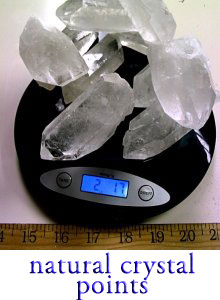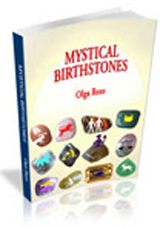
| |
Sunstone gemstone  | |  Emerald stone Emerald stone  | |  Rutile quartz Rutile quartz  | |  Topaz crystal Topaz crystal  | |  Hematite stones Hematite stones  | |  Sapphire stones Sapphire stones  | |  Fluorite crystal Fluorite crystal  | |  Diamonds meaning Diamonds meaning  | |  Vogel crystal Vogel crystal  | |  Blue lace agate Blue lace agate  | |  Jade gem stone Jade gem stone  | |  Orthoclase Orthoclase  | |  Lepidolite properties Lepidolite properties  | |  Sattuckite properties Sattuckite properties  | |  Citrine Citrine  | |  Aquamarine Aquamarine  | |  Chrysocolla Chrysocolla  | |  Rose quartz Rose quartz  | |  Amethyst Amethyst  | |  Fire opal Fire opal  | |  Obsidian Obsidian
 | |  Prehnite Prehnite  | |  Opal Opal  | |  Kunzite Kunzite
 | |  Thulite Thulite  | |  Tourmaline Tourmaline  | |  Amazonite Amazonite  | |  Petalite Petalite  | |  Tektite | Tektite |  Pietersite | Pietersite |  Ruby | Ruby |  Chrysoprase | Chrysoprase |  Selenite | Selenite |  Danburite | Danburite |  Calcite | Calcite |  Labradorite | Labradorite |  Sodalite | Sodalite |  Meteorite | Meteorite |  Pyrite | Pyrite |  Rhodochrosite | Rhodochrosite |  Turquoise | Turquoise |  Moonstone | Moonstone |  Wulfenite | Wulfenite |  Jasper | Jasper |  Chalcedony | Chalcedony |  Chrysoberyl | Chrysoberyl |  Rhodonite | Rhodonite |  Magnetite | Magnetite |  Rutile | Rutile |  Pearls | Pearls | 
|
Fake vs Genuine Amber
Recently we received the following question (posted in a comment) from Alioth:
"How can I differentiate real amber with fake amber? I've heard there is a lot of fake amber being used in jewellry."
So, thanks Alioth for allowing us to shed some light on this subject.
This is one of the common dilemmas that usually go hand in hand with the activity of purchasing Amber and, for that matter, many other crystals and stones. Unfortunately, it can happen that unscrupulous vendors take advantage of their customers and try to sell fake crystals and stones. Because of this, it can be beneficial to have some basic knowledge about how to tell fake amber from the real deal.

What materials are being used to simulate Amber?
Along with the other popular jewelry stones, fake Amber occasionally appears on the markets. There are several possible imitations that are being used to replace Amber, such as Glass, Polymer materials, Casein, Copal (young tree resin) and other substances.
The majority of reliable methods of testing Amber that a non-expert can perform are destructive. We personally have never dared to test our own Amber specimens by using any of the destructive tests. If you can, try to limit yourself to the few non-destructive methods mentioned below.
Glass is relatively easy to differentiate from Amber because Glass is cold to the touch and harder than any common metal. This means that glass cannot be scratched by iron, whereas Amber can (avoid using needles on your Amber, though).
Young resins (Copal) give a sweet smell during heating. This smell can partly imitate the smell of real Amber. So Copal is probably the most difficult case of all fake Amber stones to differentiate.
Fenolic resins are often used as an imitation of Amber. Small insects are sometimes added to the matrix to emulate the texture of the genuine material (we all know that insects are often found in Amber). The fenolic resins are easy to discriminate though - the insects are either too much preserved, too regular or too big, or all of the above. When heated, the fenolic resins do not give off the pine tree smell of true Amber.
Modern artificial materials, such as plastics can be, up to a degree, successful in imitating the color and constitution of Amber. Casein is a special case of these modern plastic materials obtained from milk. Casein is slightly heavier than Amber. All plastic products, however, do not give off the characteristic smell of burning Amber.
As you may have guessed it by now, the smell is one of the most reliable ways of proving Amber. Upon warming up, natural Baltic Amber emits a typical pine resin smell which is very difficult to fake. Apart from Copal, where the sweet resin smell that can be confused with that of Baltic Amber, all the other imitations produce a smell of burning plastic.
Let us examine some of the methods for distinguishing real from artificial Amber.
Taste:
This is one of the simplest nondestructive tests. It is necessary to clean your Amber really well before trying this, and then taste it with your tongue, slowly, several times. Genuine Amber has a very subtle taste - it is almost tasteless. In contrast, most of the artificial polymer materials that mimic Amber possess an unpleasant taste.
Rubbing
Take your Amber and rub it using the palm of your hand. It takes a strong hand to do this test, but in principle it comes down to rubbing your Amber very intensely for a couple of minutes. This way it may be possible to heat Amber up to the point it starts to release the smell of pine tree. If it is Amber embedded in jewelry, this method might not be the best choice as you might accidentally scratch your stone.
Floating

Amber floats in salty water. That is how Amber is being harvested in the first place. Due to this feature the local citizens near the shores of the Baltic sea are able to easily collect pieces of Amber, especially after stormy weather. In normal conditions Amber is deposited under the sea floor.
In order to do this experiment, prepare a glass of saline water - one part of salt mixed with four parts of water should do the trick. Amber will float whereas many of the plastic imitations as well as Copal will sink down.
Below are listed several more or less destructive methods. If you decide to try these experiments you should do that at your own risk as you can potentially destroy your jewelry.
Amber burns like an incense producing a black smoke. It does not melt when heated. Copal and the plastics do melt and release an unpleasant smell. Amber, on the other hand, has been used as an incense for centuries because it burns and gives off a pleasant smell of pine tree.
Piercing a hot needle
If you have Amber embedded in jewelry you can try the following test, which requires of you to pierce a hot needle into your Amber stone. This will permanently damage your Amber, but if you choose the place of penetration carefully, for example close to the hole of the bead or near the metal settings, the damage might not be so visible. If you notice the smell of pine tree this is a good indication of genuine Amber. Be warned once more that this technique will cause permanent damage of your jewelry. Besides, Amber is fragile - a hot needle may lead to cracks appearing within the body of the stone, whereas a hot needle will pierce through plastic materials without any fissures.
Heating
Natural Amber contains tiny bubbles of air, trapped most probably at the same time as the insects within. When heated these bubbles tend to evaporate making the bulk more transparent and the color is shifted toward darker shades.
Solvent test:
Most of the plastic imitations of Amber as well as the young tree resins are susceptible to solvents. Amber, however is not. Dripping a few drops of acetone on the surface of any plastic imitation will get the surface sticky and/or change the color and constitution of the material. This is nicely demonstrated in the video below:
In conclusion, as always, the best precaution from fake Amber is to purchase your jewelry from reputable sources.
How do you discriminate Amber from the various imitations? Do you have a method you can share with us?
Comments:
leni shea says:
11-07-2014
I own a large piece of darker red amber. It is a Buddha figurine. 12" high weighing 4 lb. The color gets lighter to the top. Yellow to orange..
Where the carver did not polish are carve like large crevices all over the amber. It is like sand paper and the color is like a tarnish lighter brown. It is hand carved as anyone can see. No 2 ways about that.
There are no bugs inside as I can't see any. B an awful lot of debris. Folded leaves. Lots of like grass and moss. Small white pieces and many others towards the bottom I can't make out. Going up to the top but
lesser debris. This Buddha is full of it, no lines or bubbles. When I hold him against the sunlight, it's like fire inside and all that debris. I have never seen anything like this.
I read up on how to test amber. First I got acetone. I poured all over the bottom. The bottom is about in length of 4". The acetone just laid there till I wiped it of, no damage. The bottom is shiny as ever.
I did it a second time. The same. No damage. Then I used nail polish remover I poured all over the bottom. It just laid there till I wiped it of, again. No damage.
The hot needle did not penetrate the piece. Then I took 2 long wood matches. Tried to set him on fire on the bottom. I held the 2 matched till the flame got to close to my fingers. When I removed the matches
and let it cool. But just a black like smoke or something on my fingers when I wiped it of . Again, no damage to the piece. I could not tell if it was burned or not. No damage. Then I took 1 match and went
to the top where the amber was lighter in color and thinner by his hand. I held the match and watched the amber burn. It burned even. No melting. No stickines nothing. And no damage. Shiny as before. And odor or small?
I didn't smell anything. I had to hold my nose right on the spot I burned, very very faint. Hardly nothing. No odor or smell. I could not do the salt water test. He weighs 4 lb, he wouldn't fit in a plain glass.
Those are the tests I did. Not use just drops. I went all the way to make 100% sure I know what I got. Is there anything else to test this piece. I do anything , now i know nothing will
damage this piece regardless where I perform the test. Let me know. leni shea: luckys289@aol.com I got him at a flea market about 7 years ago paid $ 30.00 for him.
sunnyray says:
11-18-2014
Hi leni shea
Thanks for taking the time to share with us your experiences with the Buddha figurine. I cannot be 100 percent certain, but judging from the results of the many tests you performed, I wouldn't say it is a piece of amber.
Probably it is something else. Also the price doesn't seem right. An amber item of that size and mass should be much more expensive. In order to be sure, you should definitely consult an expert. Or maybe some of the readers
will be able to offer some help.
mils says:
05-31-2015
There is also pressed amber. You can press together several smaller pieces of amber either by a great force or by heating. It is cheap comparing to real amber. Avoid such specimens if you want powerful natural Amber.
Ivan says:
03-08-2017
I recently purchased a rather amber figurine in the form of a cat. If it is truly amber, it's the largest specimen I've ever seen. It stands about 15 inches high and weighs about 7 lbs. Due to the size, i'm tempted to believe it's not amber, but I've done the acetone test, the hot needle test, and the scratch test and all giving me the positive result for amber. I need to consult with an amber expert to be really sure. Can you supply the contacts for any in the southeastern United States?
sunnyray says:
03-11-2017
Hi Ivan, and thanks for the comment. Unfortunately, I have no idea about an amber expert. Maybe someone else will know, though.
Giorgio Pin says:
07-01-2018
Hello. I am contacting you in the hope that you could give me some advice. I was in Gdansk recently and bought a few pieces of amber while I was there. All the items I purchased sink in water and float in salty water. The problem is that two of the items, that I bought in the same shop, don't react to UV light at all. I have read on the internet that ALL amber reacts to UV light so am unsure what I have here. These pieces are of a denser/darker colour ie not clear so maybe that is why they don't react.
I was very happy with the establishment I purchased the items from - it was located along the river next to some other amber shops and looked reputable and professional.
Any help/advice you could provide would be really appreciated. Many thanks..........Giorgio.
sunnyray says:
07-01-2018
UV test doesn't work so good with heated amber, so your amber could be genuine but heated. To be sure, you should consult a gemologist.






























